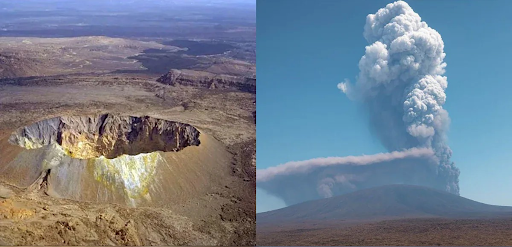




Source: researchgate.net
Disclaimer: Copyright infringement not intended.
On January 30, 2025, New Zealand granted Mount Taranaki (Taranaki Maunga) legal personhood, making it the third natural entity in the country to receive this status.
|
Alternative Name |
Also known as Mount Egmont, located in Egmont National Park, North Island, New Zealand. |
|
Legal Status |
Recognized as Te Kāhui Tupua, a living entity with legal rights and responsibilities. |
|
Geographical Features |
A stratovolcano, standing 2,518 meters (8,261 feet) tall, with a symmetrical volcanic cone, formed by the subduction of the Pacific Plate under the Australian Plate. |
|
Governing Body |
A joint management body comprising local Māori iwi (tribes) and government appointed members will oversee the mountain’s conservation and decision-making. |
|
Cultural Significance |
Considered a sacred ancestor by the Māori people playing a central role in their identity and traditions. |
|
Historical Context |
Māori lands including Mount Taranaki were confiscated during British colonization. The Treaty of Waitangi (1840), intended to protect Māori rights, was often breached. |
|
Environmental Impact |
Legal status ensures protection from land sales, exploitation and environmental degradation. Focuses on traditional Māori conservation practices and preservation of native flora and fauna. |
|
Precedents in NZ |
New Zealand previously granted legal personhood to: |
|
Global Significance |
Part of a growing movement to grant natural entities legal rights, seen in cases like the Ganges and Yamuna rivers in India (2017) and Colombia’s Amazon rainforest (2018). |
|
Legislative Process |
The New Zealand Parliament passed the bill unanimously showing strong national support for Indigenous rights and environmental conservation. |
|
Symbolic Importance |
The decision was celebrated with traditional Māori songs marking a moment of cultural unity and reconciliation. |
|
Future Outlook |
Strengthens Māori land rights, promotes sustainable conservation, and could set a precedent for more natural sites worldwide to receive similar legal status. |
Sources:
|
PRACTICE QUESTION Q.Which of the following statements about Mount Taranaki’s legal recognition is correct?: 1. Mount Taranaki was the first natural entity in New Zealand to receive legal personhood. Which of the statements given above is/are correct? (a) 1 only (b) 2 only (c) 3 only (d) 4 only Answer: (b) Explanation: Statement 1 is incorrect Mount Taranaki is the third natural entity in New Zealand to receive legal personhood, after Te Urewera Forest (2014) and Whanganui River (2017). Statement 2 is Correct The New Zealand Parliament officially recognized Mount Taranaki as Te Kāhui Tupua, granting it legal personhood with rights and responsibilities. Statement 3 is incorrect The legal status protects the mountain from commercial exploitation, ensuring conservation and sustainable management. Statement 4 is incorrect The Treaty of Waitangi (1840) was intended to protect Māori rights, but it was frequently violated, leading to land confiscations, including that of Mount Taranaki. |






© 2025 iasgyan. All right reserved